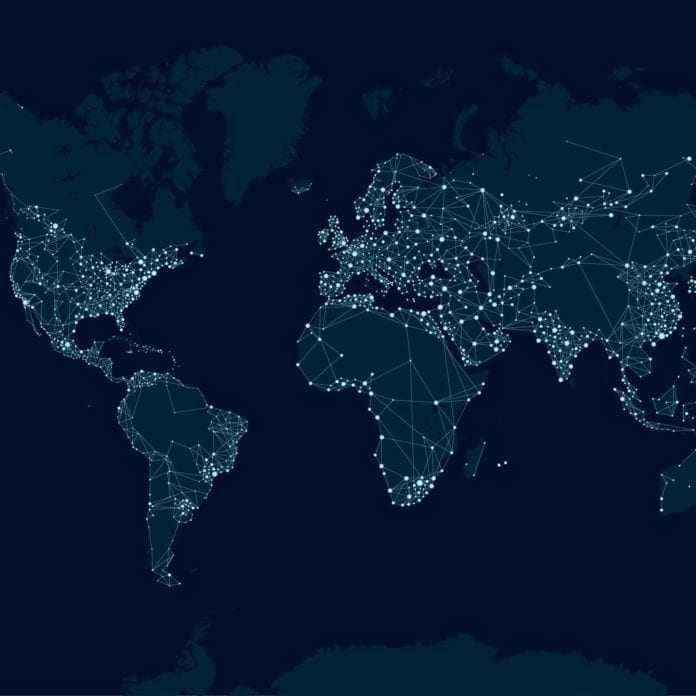The FirstNet-AT&T partnership is just one example of public safety LTE
The standardization of mission-critical features in LTE has helped to foster a number of global efforts to use LTE for public safety. The U.S.’ Firstnet project is one, but there are a number of others in various stages of development.
Because of 3GPP’s standardization, “LTE is increasingly being viewed as an all-inclusive critical communications platform for the delivery of multiple mission-critical services ranging from PTT group communications to real-time video surveillance,” SNS Research concluded in a 2017 report on the public safety market.
As of the GSA’s latest report on the status of public safety LTE deployments in mid-2018, 10 countries had deployed or were in the process of launching public safety LTE, either — and that did not include South Korea’s deployment of LTE-R, which provides mission-critical functionality for railway transportation use cases. FirstNet is one of many LTE networks for public safety that are either being launched or in development, although each deployment is unique. The U.S. now has the FirstNet network launched, as well as a private LTE core and additional features for public safety being offered by both Verizon and U.S. Cellular.
“I think the success that we’ve been able to see in the U.S. is leading a lot of other countries to move forward,” said TJ Kennedy, former president of the First Responders Network Authority and now now a co-founder and principal at advisory firm the Public Safety Network.
Countries which are using or exploring LTE for public safety include:
-The United Kingdom, where the U.K. Home Office is leading an effort to bring LTE access to first responders in that country via the Emergency Services Network. The software that ESN runs on is from Motorola Solutions and the infrastructure is being built by EE as part of their existing network, including deploying more sites in rural areas and building around 500 new ones. The government is pitching in as well, set to build another 300 sites in “the most remote and rural parts of Britain” that could also be leveraged to being commercial coverage to those areas. The network is on schedule to be complete by the end of this year; EE has completed 354 of the new sites as of the latest update by the Home Office. Network users will get priority access via a dedicated network code and will be able to leverage priority radio and core network bearers.
-In Australia, Telstra has been operating its LANES offering — prioritized access to its commercial LTE network — since 2016, adding mission-critical push-to-talk in 2017 that was enabled by its existing LTE Broadcast capabilities for delivering PTT calls to groups. That deployment was achieved with support from vendors Ericsson and Motorola Solutions. the government set aside spectrum at 800 MHz and 4.9 GHz for public safety mobile broadband. LANES offers a basic prioritized access service as well as one that allows organizations which need emergency communications to use their own LTE spectrum combined with “an option to extend onto the Telstra LTE spectrum.”
-In South Korea, deployment work on a public safety LTE network began in December, according to local press reports, after KT and SK Telecom won bids to build various parts of the network. The government has pledged $1.5 billin to build the network, which it expects to be complete by 2020; South Korea also plans to launch a maritime public safety LTE network.
-Kenya began work on a national public safety LTE network in 2014 as part of a broader effort to make its cities safer, IHS Technology has noted. Nairobi and Mombasa have coverage, with more than 100 base stations and 7,000 terminals, per the GSA’s numbers.
-According to the GSA, there are a number of existing private LTE networks for public safety around the world that are not country-wide, but are city-based. The GSA said that approach “has been prevalent in China, where several cities have city-based government-financed PS-LTE networks for emergency services and first responder use.” The GSA noted that China began working on a national network with dedicated spectrum in 2013 with efforts to cover10 cities; in the city of Nanjing, the GSA reported that there are 256 base stations and over 10,000 terminals in service.
-In the Middle East, Qatar launched an LTE network for public safety in 2010 and the small country has “near nationwide coverage.” Qatar’s Telecommunications Department of the Ministry of Interior was recognized by Airbus at the Critical Communication World conference in 2017 for its collaboration with the company to develop integration of TETRA and LTE to support emergency communications. Neighboring Dubai also has a government-run public safety LTE network using 700 MHz spectrum.
-In addition to the 10 identified countries with network deployments, the GSA said that nine more countries are testing public safety LTE networks: Brazil, Finland, Thailand, France, Hong Kong, Japan, Mexico, Norway and Singapore are all trialling PS LTE networks.
Looking for more information on advances in public safety communications? Check out RCR’s recent editorial special report and webinar.

